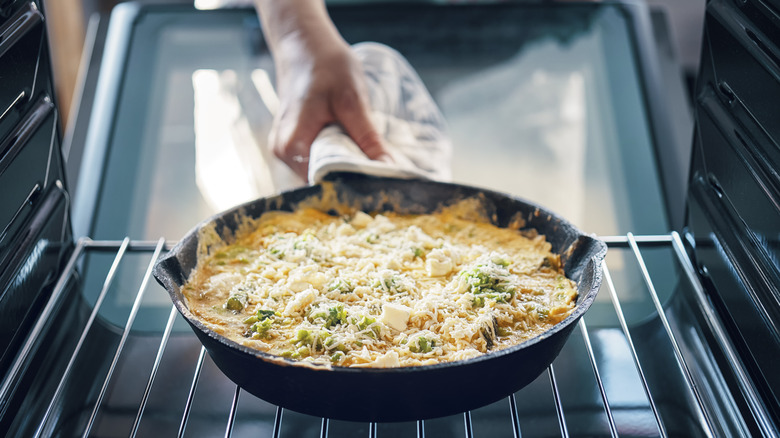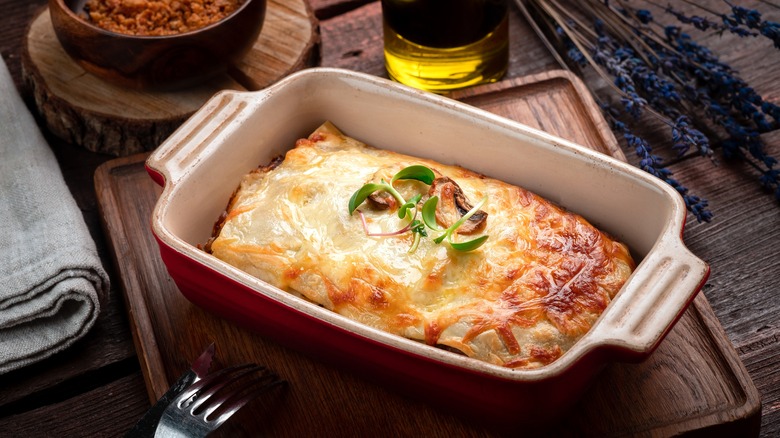Avoid Cast-Iron Pans When Making Casserole With Highly Acidic Ingredients
Cast-iron pans are one of the most romanticized kitchen tools around, and for good reason. They are super sturdy, incredibly versatile, and are the preferred cooking vessel for everything from high-end steak to savory skillet cornbread. Once you have gotten comfortable with using this type of pan in your kitchen, you may be tempted to use it for everything; however, when making something like a casserole, especially one with acid-forward components, it is better to steer clear to avoid some unpleasant flavor transfer.
Cast-iron pans are made from just that — iron. When iron comes into contact with acidic substances for long periods of time, it begins to break down. In the case of a cast-iron pan, the molecules that result from this chemical reaction will transfer to your food. This can happen with low-pH ingredients like tomatoes, wine, citrus, seafood, and even some cheeses. While this reaction is not dangerous to your health in small amounts, it can potentially leave your meal with a slight metallic taste. As such, if you plan on putting these kinds of ingredients in a casserole, or any other recipe with a long cooking time, we recommend opting for a different kind of pan.
What kind of pan to use instead
With cast iron off the table, what alternative vessel should you use to cook your acidic casserole? We recommend going with a rectangular ceramic or glass casserole dish. These dishes are our preferred option as they provide similar durability and versatility to cast iron in addition to a classic casserole presentation; plus, ceramic and glass are both generally inert — or non-reactive — so they present none of the risk of flavor leaching. They are also very easy to clean and maintain, though they tend to be quite sensitive to rapid changes in heat (glass in particular).
If you are insistent on using cast iron for your casserole recipes, you can still save the casserole from taking on unwanted flavors by using a dish made with enameled cast iron. This is a cast-iron vessel that has been coated in a thin layer of vitreous enamel. The coating protects the dish from reacting with ingredients the way unfinished cast iron does while still providing most of the same benefits. It is worth noting, however, that this type of cast iron is slightly less heat-tolerant than traditional cast iron, due to its glass-based enamel, and also lacks its natural non-stick quality.

